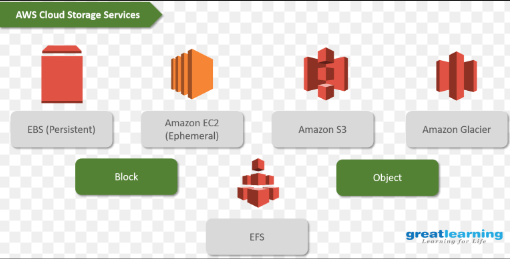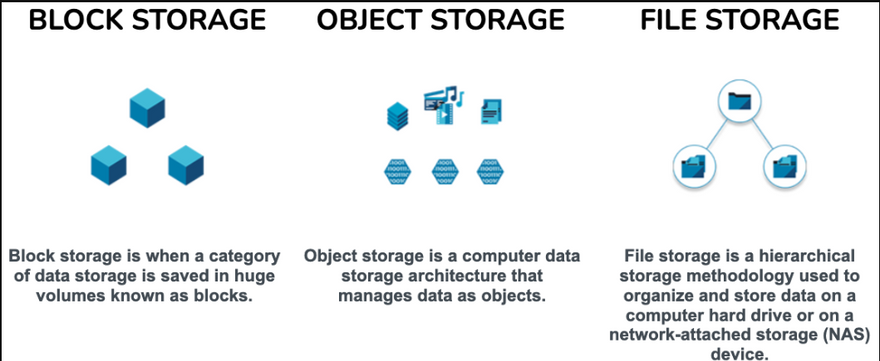Files, Blocks and objects are storage formats that hold, organize, and present data in different ways- each with their own capabilities and limitations. File storage organizes and represents data as a hierarchy of files in folders, block storage chunks data into arbitrarily organized, evenly sized volumes, and object storage manages data and links it to associated metadata.
Containers are highly flexible and bring incredible scale to how apps and storage are delivered.
file storage:
File storage also called as file level or file based storage. Data is stored as a single piece of information inside a folder. when one need to access that data computer need to know the path to find it. Data stored in files is organized and retrieved using a limited amount of metadata that tells computer where the file is kept.it is like a library card catalog for data files. This is the oldest and widely used data storage system for direct and network attached storage system. file storage has broad capabilities and can store just above anything. Its great for storing an array of complex files and is fairly for user to navigate. File based storage must scale up by adding more systems than scale up by adding more capacity.
Block storage:
Block storage chops data into blocks and stores them as separate pieces. Each block of data is given a unique identifier which allows a storage system to place the smallest pieces of data wherever is convenient. Block storage is often configured to decouple the data from the users environment and spread it across multiple environments that can better serve the data. and when data is requested the underlying storage software reassembles the blocks of data from these environments and presents them back to the user. It is usually deployed in storage area network environments and must be tied to a functioning server.
Block storage does not rely on a single path like file storage. Each block lives on its own and can be partitioned so it can be partitioned so it can be accessed in different operating system which gives the user complete freedom to configure their data.it works well with big transactions and those deploy huge databases i.e more data to store it will be better with block storage.
It has disadvantages like it is more expensive, it has limited capability to handle metadata which means it needs to be dealt with in the application or data base level.
Object storage:
Object storage is a flat structure in which files are broken into pieces and spread out among hardware. In this storage the data is broken into discrete units called objects and is kept in a single repository. Object storage volumes work as modular units. Each is self contained repository that owns the data an unique identifier that allows the object to be found over a distributed system and the metadata that describes the data. The metadata is important and includes details like age, privacy and securities and access contingencies. Object storage metadata can also be extremely detailed and is capable of storing information in where a video was shot, what camera was used.
Object storage requires a simple HTTP application which is used by most clients in all languages. It is cost efficient. Its a storage system well suited for static data and its agility and flat nature means it can scale to extremely large quantities of data. They ae good at storing unstructured data.
there are disadvantages like objects cant be modified. This storage cant work on traditional databases because writing databases is a slow process and writing an app to use an object storage is not as simple as using file storage.



Top comments (0)